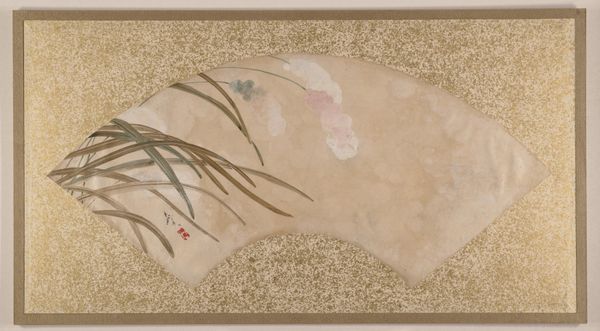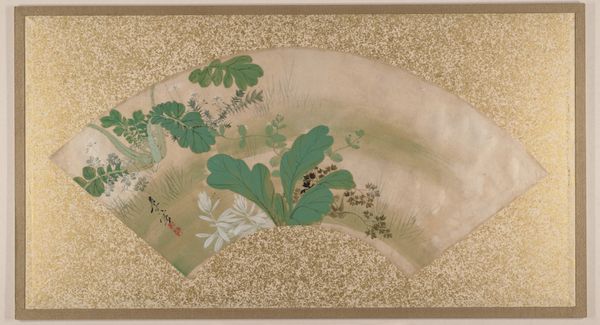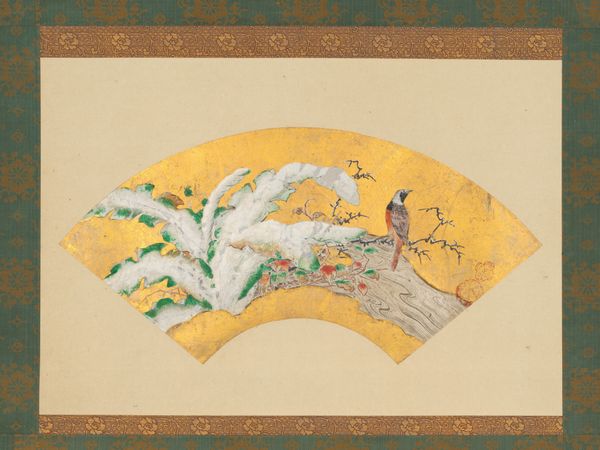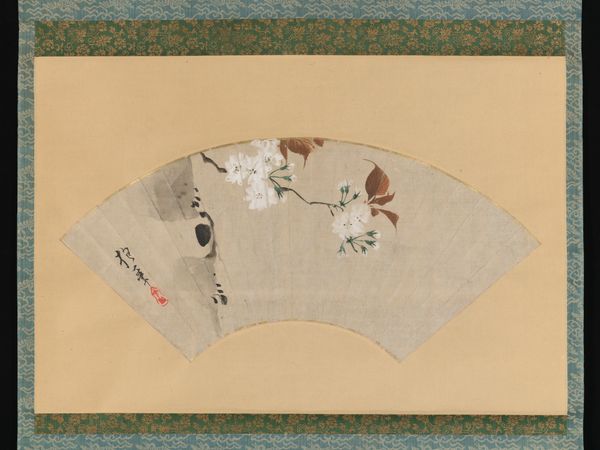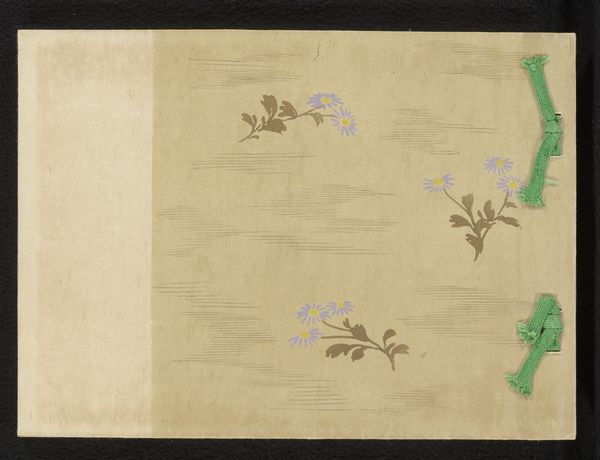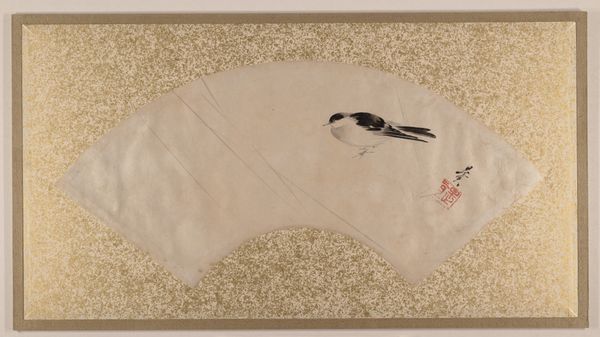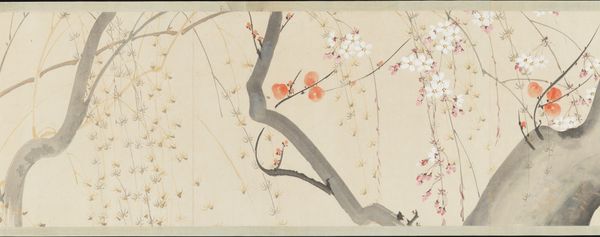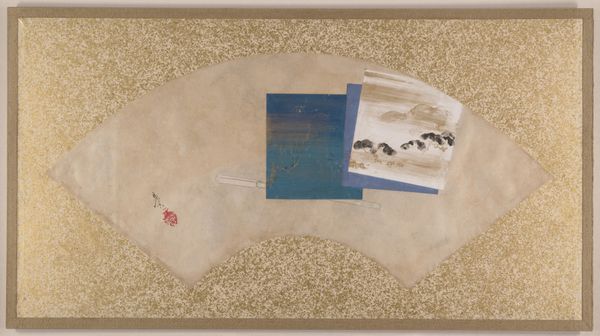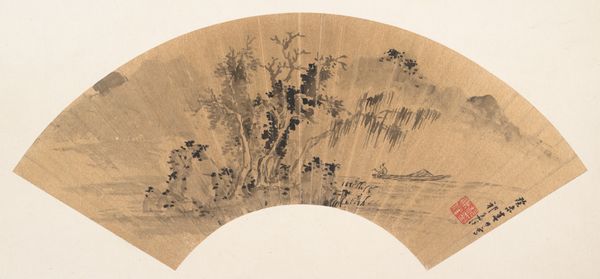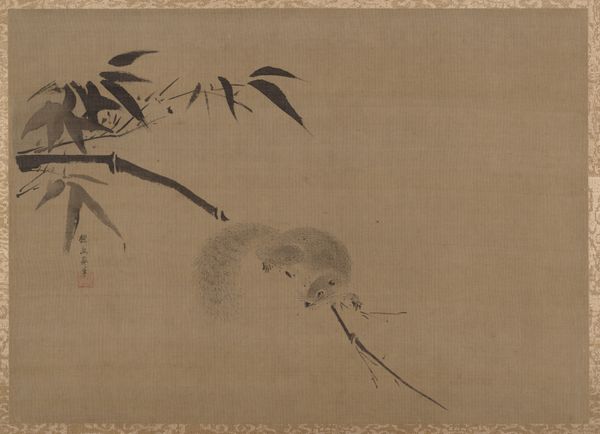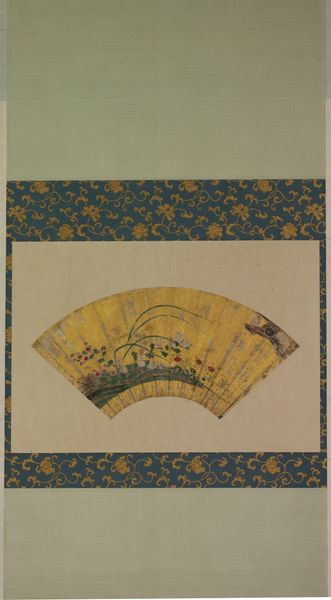
tempera, painting, watercolor, impasto
#
water colours
#
tempera
#
painting
#
asian-art
#
landscape
#
watercolor
#
impasto
Dimensions: Overall: 13 x 23 5/8 in. (33 x 60 cm) Image: 7 1/2 x 20 5/8 in. (19.1 x 52.4 cm)
Copyright: Public Domain
Curator: At first glance, there's an almost dreamlike quality to this image. The textures are intriguing. Editor: Indeed. What we have here is “Flowers on Grass,” crafted sometime between 1867 and 1891 by Shibata Zeshin, utilizing tempera, watercolours, and even a touch of impasto. The work currently resides at the Metropolitan Museum of Art. What resonates for me is the implicit commentary on cultural aesthetics in play, even the politics of viewing in what might first appear as simple subject matter. Curator: The way he presents the flowers against the bold strokes of grass almost feels symbolic, contrasting delicate beauty against a backdrop of grounded reality. It recalls ancient artistic traditions, connecting us to Japan's cultural heritage while inviting modern contemplation. Editor: Yes, the representation of the grass feels gestural almost as though mimicking a fan shape, echoing the landscape as a contained element. The use of a conventional, delicate approach to depict foliage while contrasting with the larger context of sweeping impressionistic grass lines could symbolize the control and chaos experienced within modernization. I consider also how it can relate to traditional roles within Japan between this period and its present time in terms of labour. Curator: It is very true, while one reads such tension and resistance to its chaos of transformation, one can sense it may echo personal moments for some too; from the gold backdrop of this piece to its more personal renderings. We may come close to such moments, of beauty and simplicity when our natural environment allows it through. Editor: Yes and by juxtaposing a natural landscape within the backdrop of gold almost feels like an endorsement on precious metals, maybe the artist is trying to evoke class struggles? I find these dichotomies very powerful. Zeshin positions us to look closer into society in multiple scales. Curator: It's remarkable how an artwork can function as a kind of historical and personal mirror, refracting various cultural contexts, symbols, and individual encounters across generations. Editor: Exactly, and understanding those cultural symbols helps us see more clearly—how art can become both an object and a method for understanding shared experiences. Thank you.
Comments
No comments
Be the first to comment and join the conversation on the ultimate creative platform.
